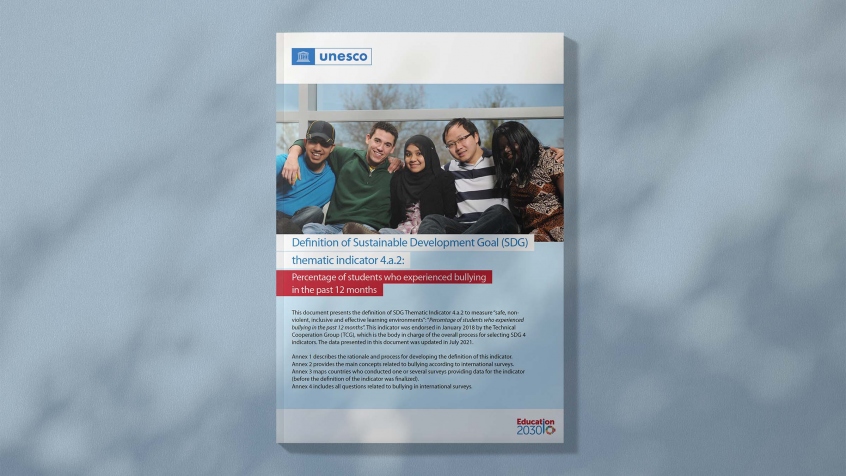UNESCO recently published a document providing further detail to the Sustainable Development Goal (SDG) Thematic Indicator 4.a.2 that measures “safe, nonviolent, inclusive, and effective learning environments” by collecting data on the percentage of students who experienced bullying in the last 12 months. The collection methods suggested for this indicator are international surveys, including IEA’s TIMSS and PIRLS data on bullying.
Bullying as a form of school violence is one of the major obstacles to achieving the SDG 4 Target 4.a that calls for safe education facilities. School violence has an adverse impact on students’ quality of education, with consequences such as missing classes, avoiding school activities, or dropping out of school altogether. Furthermore, engagement in bullying behavior can lead children and young adults to other forms of violence and risky behaviors, which can cause serious harm to their physical and mental health.
With the SDG 4.a.2, education systems can analyze IEA data within a larger methodological framework that has been finalized and approved by a group of international education experts from the World Health Organization, the United Nations, the Health Behaviors in School-age Children Consortium, as well as IEA’s Executive Director Dirk Hastedt.
Reliable data are crucial to evidence-based decision-making. The SDG Thematic Indicator 4.a.2 can help identify the students who are affected by bullying and assist the policymakers in developing and implementing measures to tackle this form of school violence. Over time, the indicator has been used to monitor progress of countries’ measures to support the students most vulnerable to bullying.

